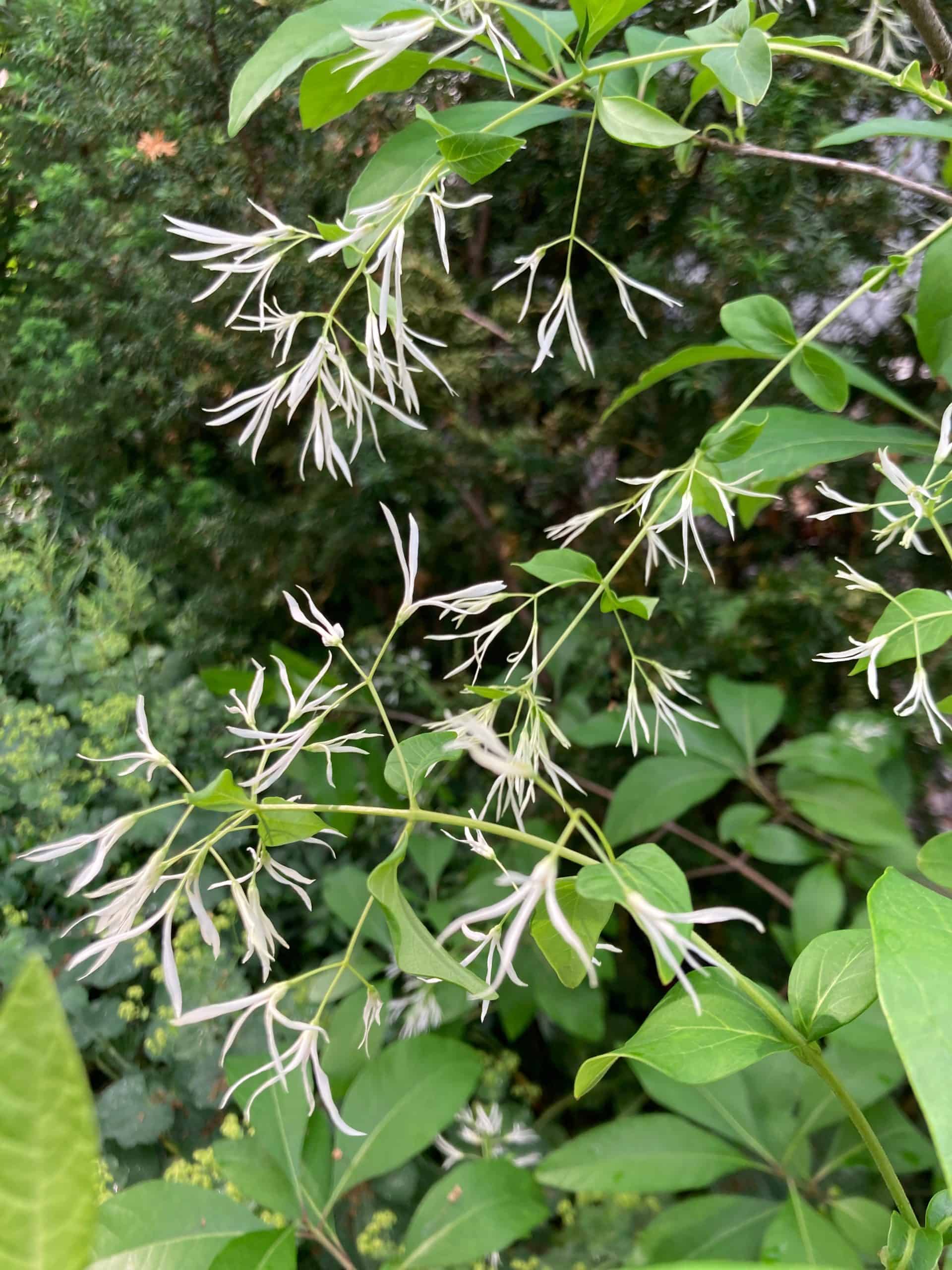The longer I garden, the more eager I am to find space for another tree on our property. This seems counterintuitive given that at my age, I won’t see the trees I’ve planted in the past few years reach maturity. No matter. We plant trees for the future, not for ourselves.
We inherited four nondescript trees when we moved into our house 19 years ago, and have planted more than two dozen different trees since then. Many, but not all, are native. One of the most recent to join our mini-arboretum is fringe tree (Chionanthus virginicus), native to the southeastern U.S. It came to our attention when we attended the Philadelphia Flower Show in 2016, where several had been forced into bloom for display gardens.

Fringe tree has a loose, open habit, and produces clusters of flouncy white flowers in late spring and golden leaves in autumn. Books say the blooms are fragrant, but I haven’t detected a scent. It’s a slow grower, eventually reaching 20 feet (6 m), and is hardy to Zone 5 (optimistically Zone 4).
Our young fringe tree, planted four years ago, took a couple of years to bloom, but it was worth the wait. Now, I’m anxious for a three-year-old native tulip tree (Liriodendron tulipfera) to bloom. Maybe next year.
When tree shopping, we choose young trees for a few reasons: they often adjust to the stress of transplanting more easily than large specimens; they’re less expensive (depending on the tree, of course); and it’s easier to dig a hole for a five-gallon pot than a massive balled-and-burlapped root ball. In any case, a small tree planted at the same time as a larger specimen catches up in just a few years.
If you’re in the market for a new tree, do your research. Unlike annuals and perennials, a tree shouldn’t be an impulse buy (although I’ve been guilty of this). I recommend Michael Dirr’s books for good descriptions and frank observations of a tree’s attributes.
Also, look at the trees thriving in your neighbourhood to see what grows well, but don’t be afraid to experiment if you come across a small specimen of something special when you’re at a garden centre.
For unusual trees, visit small specialty nurseries. If you have something specific in mind and can’t find it, ask an arborist; they might know of various sources for trees. Finally, as your new trees grow and mature, treat them like an investment (because they truly are), enlisting a skilled, certified arborist to keep them pruned and well-cared for.
For more on tree planting, see:
When to worry about pests
Something is eating my dahlia leaves — likely slugs, although I don’t see any of their slimy trails. There are also small pinholes in my black kale plants — flea beetles? And then there’s my poor sorrel patch.
Yes, it’s that time in the gardening cycle when the unblemished, rosy flush of spring blooms gives way to the ragged, skeletonized, curled leaves of summer, thanks to common garden pests moving in. My attitude is generally to “live and let live,” relying on birds, blasts from hose nozzles and manual removal to keep infestations in check. However, when things get fraught, I check “Pest guide: 10 pests to worry about,” by Steven Biggs.
More gardening ideas
•. I’m filing away for next year a few container combinations described in “Cool combo containers to consider” from Michigan State University Extension, especially the all-foliage design with burgundy, silver and lime.
•. For those of you who want to grow a few cut flowers, but don’t think you have the space, check out “Ask the expert: 7 tips to grow cut flowers in a tiny garden” at Gardenista.
•. Houseplants are enjoying a huge resurgence. If you have developed a special interest in the category of plants that grow in “strings,” such as string of pearls or string of tears, there are many more to collect — “12 string of plants to grow,” according to Ohio Tropics. Who knew there was a plant called string of pickles?
